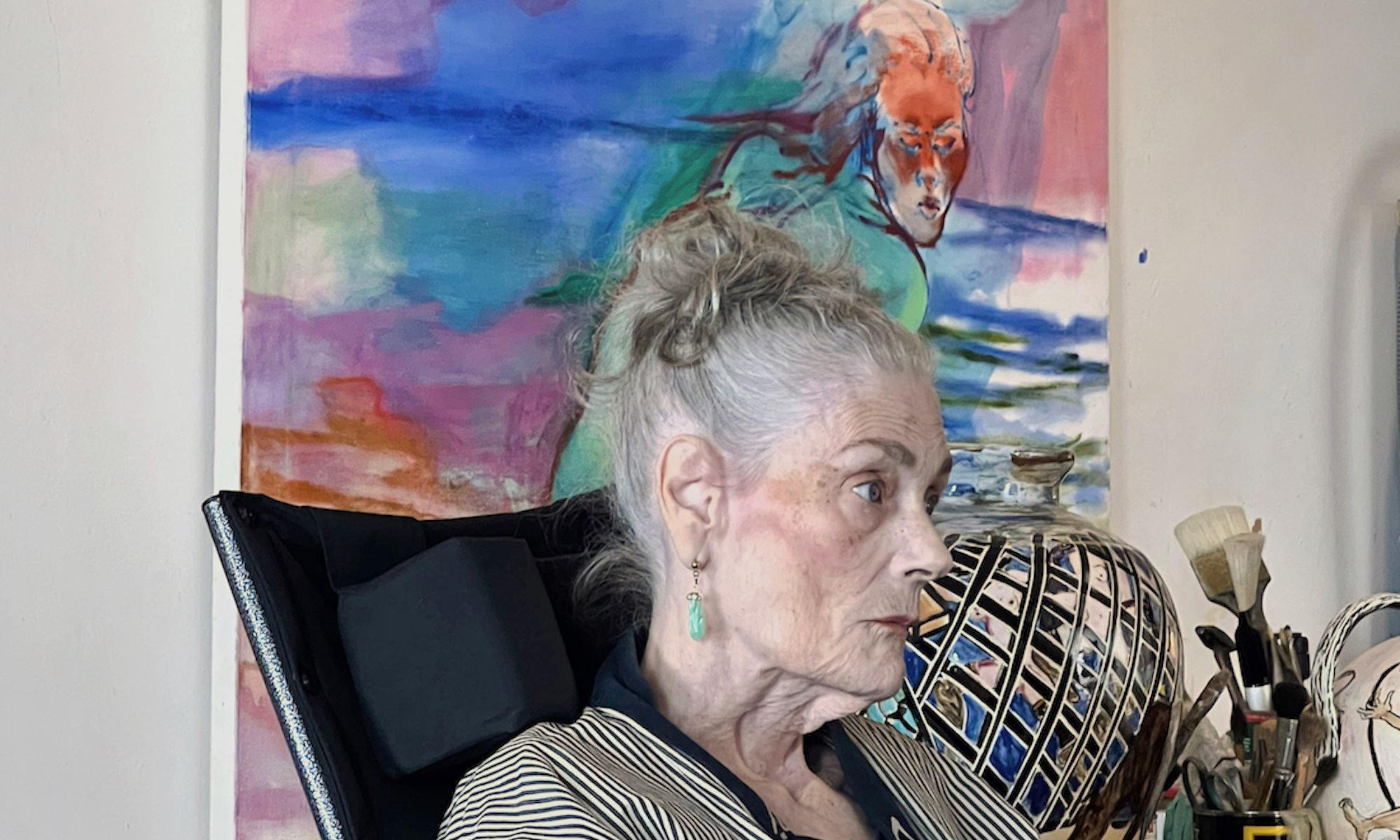Juanita McNeely in her studio Photo: Quinn Charles, courtesy James Fuentes
Juanita McNeely, the feminist painter whose massive, visceral canvases were largely inspired by her personal hardships, has died. She was 87 years old, and her death was confirmed by James Fuentes Gallery, which she had worked with since 2020. Though she had dedicated her life to painting, it was in recent years that her career had finally begun to build its most substantial momentum and she started to garner institutional support.
McNeely was born in St. Louis in 1936. She found a passion and drive for painting at a young age, and at 15, she was awarded a merit scholarship for her oil painting. Her family encouraged the pursuit and turned their garage into a studio for her. Around this time, however, her earliest health troubles began; according to the artist Sharyn M. Finnegan’s 2011 essay in Woman’s Art Journal, McNeely suffered from “a terrifying case of excessive bleeding” that was so severe, she was forced to miss an entire year of high school. Images of bleeding women would go on to be major motifs of her work.
Juanita McNeely, From the Black Space I (panel 6), 1975 Courtesy James Fuentes
McNeely attended the St. Louis School of Fine Arts at Washington University, and it was during her college years that she had the second major medical trauma of her life—a cancer diagnosis that carried with it the prognosis of only three-to-six months to live. When her doctor suggested she spend the time doing whatever made her happy, she decided to remain enrolled in art school. In an interview for Finnegan’s 2011 essay, McNeely remarked that this moment “was the beginning of what really formed me as someone who spoke about the things that are not necessarily pleasant, on canvas, things that perhaps most people even feel uncomfortable about looking at, much less talking about”.
Despite her prognosis, McNeely survived and went on to get a master’s degree from Southern Illinois University, after which she moved to Chicago and became a professor at the School of the Art Institute of Chicago. In 1967, she moved to New York City, and soon became one of the earliest residents of the Westbeth Artist Housing complex, where she would live and work for the rest of her life.
Juanita McNeely, Is It Real? Yes, It Is!, 1969 Photo: Jason Mandella, courtesy James Fuentes
Shortly after her move to New York, McNeely’s cancer returned and, while in hospital, doctors discovered that she was pregnant. Because abortion had yet to be legalised in the US, doctors refused to operate, so McNeely had to get an illegal abortion, nearly dying in the process. This experience inspired her gripping 1969 painting Is It Real? Yes, It Is!—shown at James Fuentes Gallery in 2020 before being acquired by the Whitney Museum of American Art, where it is currently on view. Standing at more than 12 feet tall and 12 feet wide, the nine-panel work depicts the harrowing physical and mental experience of this medical saga.
“I have known Juanita since the 1970s, from the time when she was a young artist, beautiful and dynamic,” wrote the painter Joan Semmel, one of McNeely’s closest friends, on the occasion of a 2022 catalogue. “Juanita opened up a world to the viewer of an imagination that had travelled through the extremes of feeling and managed to extract from it a dynamic and moving panorama of life and art, ever resistant and amazingly resilient, beautiful, rich and alive.” Semmel goes on to say that McNeely’s style is one of “a female voice coping with a body and flesh that is beyond her control”.
Juanita McNeely, I Saw, 2009 Courtesy James Fuentes
Recent years saw a major increase in interest in McNeely’s work. Among other exhibitions, her first institutional survey, Indomitable Spirit, opened at Brandeis University in 2014. A solo show of her work opened this September at James Fuentes Gallery’s Los Angeles outpost, where it will remain on view through 18 November.
“When we presented Juanita's work for the first time in 2020, I don't think there had ever been a show that we'd done that had such a visibly visceral impact on everyone who came into the gallery to see it,” says Fuentes. “Rarely are there artists who can visually articulate psychology, trauma and other intangible aspects of life.”

